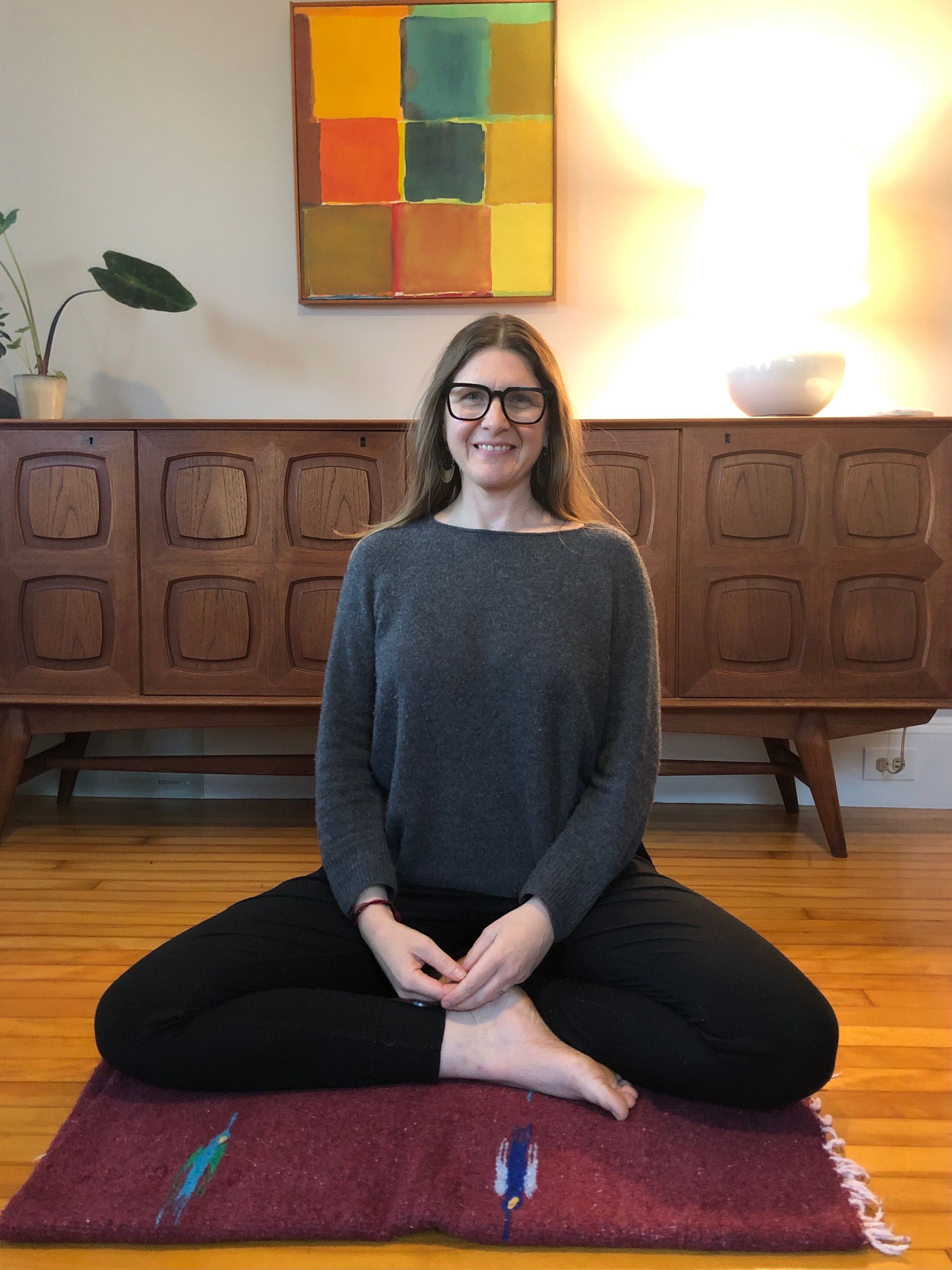With ongoing disruptions to the ways we’ve lived in the past, and the need for many of us to manage competing demands of work and family during the same daytime hours, how can we avoid a sense of overwhelm and maintain interest, much less happiness, at work?
In my wallet I have a tiny piece of worn paper—a tag I pulled off the string of a tea bag 10 years ago—with the words “Grace brings contentment.” I was struggling to survive a period of intense overwhelm when I first read it, and the phrase struck me like a lightning bolt. I interpreted “grace” as “acting gracefully,” such as with kindness, skill, and evenness of temperament. To me, the phrase meant that happiness results from particular inner attitudes and behaviors through the ups and downs of daily life.
Change is ubiquitous.
Children grow and needs arise; we experience gains and losses; difficult situations resolve or fade away as other challenges reveal themselves; we meet friends and we get things done; good fortune waxes and wanes. Our workplaces and routines, the cars we drive, and the people we come home to—they do not remain constant throughout life.
Though sages of many eras have pointed it out, one doesn’t need to be a sage to see that happiness arises not due to ideal conditions, but from our willingness to ride the waves. Do we face forward, buoyant in the shifting currents, or do we turn and struggle against them?
Mindfulness meditation—sustained attention on whatever is here in successive present moments—is a way to practice noticing, and going with, the flow. Bringing the quality of mindfulness to activities of life means we show up interested, with no expectations that things will go a certain way. It is a “let’s see” attitude, which can refresh our relationship to activities that may have seemed uninteresting or stale.
To apply mindfulness in any situation is to switch off autopilot. When mindfulness is present, we do not thoughtlessly "go through the motions."
Like curiosity, mindfulness is an agent of creative engagement that can dampen a tendency to react impulsively to the unexpected. In this way, mindfulness supports us in regulating our responses to the twists and turns of the day as it unfolds.
Especially since the demands and distractions of modern life tend to encourage mindlessness, we must purposefully create the conditions for this quality of mind to flourish. In other words, though mindfulness is an innate psychological faculty, we must deliberately call it forth.
Treating the beginning of our work day as the fertile ground in which to plant the seeds of mindfulness can support contentment, happiness, and ease throughout the day.
Try the following three-part framework for beginning a workday mindfully—you can think of it as taking a SIP of mindfulness, first thing.
- SPACE
Environment matters. Even if you are working at your dining room table rather than a dedicated desk, you can set up the space around you to support a sense of purpose, rather than detract from it (or worse, lend an air of apathy or carelessness to the space).
Keep things tidy, and bring in items that hold meaning for you, on which you might rest your gaze as you pause for a mindful midday moment.
Under my monitor sits a small ceramic tray made by a friend, holding a wooden Buddha and a tiny singing bowl. (I realize this reads as a response to “tell me you’re a meditation teacher without telling me you’re a meditation teacher.”) You might have a photo of a loved one or a piece of jewelry you love but is not practical to wear. Try not to let your space become cluttered with too many items of meaning as the result will be to dilute the power of any of them to engender good feelings.
When you first arrive at your space for the day, spend a few moments organizing before you begin. Put stray papers and pens away, remove any mugs from the day before, and straighten the items on your work surface.
Respect for your workspace is one way to show respect for your work and honor the energy and time you spend on it, and the talent you bring to it. - INTENTION
Once you have tidied your workspace, bring to mind how you want the day to go. In other words, set an intention.
You might consider the qualities you would like to bring to your work, or to your interactions with your co-workers. Alternatively, you may ask yourself, “How do I want to feel as I work,” or “How do I want to feel at the end of the workday?” Another way to determine an intention is to consider what you would like to—and can realistically—complete.
Try to be specific and name your intention not as a wish but as an action you will take.
Rather than “I want to feel better after meetings than I usually do,” you might name your intention as “maintain well-being through meeting.” Hopefully this will spur you to show up to the meeting under agreement with yourself that you will consciously breathe or go off camera or take some other action in support of your well-being if needed.
If you want to repair a relationship with a coworker, you might name “proceed with care,” or “reconnect.” And if you want to avoid a familiar sense of feeling unheard or misunderstood by someone you might name “speak the truth” or “show up, be clear, and let go of the outcome.”
On the other hand, an abstract intention can set a mood or tone for the day. Some mornings I write on my large square scratch pad something like “tend” or “it matters” when a project has been languishing and I know that using my time wisely will allow me to complete it.
Whether the answer to our inquiry is a feeling or behavior or concrete outcome, making it an intention gives us direction and makes us more likely to make decisions and take actions that support its arising. - PRACTICE
Whether or not you already meditated or practiced yoga as part of your morning routine, now that you are in your work environment, pause.
You might take three mindful breaths, or set a timer for three minutes and notice how the body feels resting on the chair below, or warm your back and ease tightness in the shoulders with mindful movement. Simply sipping tea as you set an intention is a practice!
Come up with something that is enjoyable and enlivening to you.
What is important is ritualizing the cultivation of mindfulness and its sister qualities—such as calmness, clarity, and patience—so you can bring them into the rest of your day, infusing it with goodness.
To this three-part framework I would add a midday mindful pause, an end-of-the-workday gratitude practice naming the people and things that supported you in showing up as well as you did, and a period of quiet for winding down before engaging in other parts of life (especially if in the before times you had a commute that served as buffer between work and arriving home). These are topics for another day. For now, keep it simple, and start at the beginning.
Create the conditions for a good day by approaching it mindfully from the start.
studio BE provides ongoing support for this. If you prefer to practice with others rather than on your own, check out live morning time practices on the platform. The calendar includes several short (10-15 minute) mindfulness-based classes or experiences. On Mondays, for instance, Barbaranne Branca offers a “Brief Morning Sit” at 9:30AM ET, and on Thursdays yours truly opens space for “Morning Mindfulness” at 9AM ET. studio BE teachers offer similar classes throughout the day in hopes of supporting your morning practice no matter your time zone.
To expand the application of mindfulness in your professional life—to meetings, projects, and relationships with coworkers—I recommend meditation teacher Sharon Salzberg’s wonderful book Real Happiness at Work.
For 1:1 sessions in applying mindfulness to work, contact me or another teacher you know at studio BE. Together we can uncover habits of body and mind that may be holding you back. Moreover, it is possible to learn fresh ways of relating to ourselves, to others, and to our work that enlivens our interest in our job right now, or our career in the long term.
However you do it, skillfully starting your day—perhaps by tidying your space, setting an intention, and practicing mindfulness—this is the sort of grace that brings contentment.
Guest post by studio BE Senior Facilitator Sarah Jane Shangraw.
Sarah Jane Shangraw is a Boston-based mindfulness educator, Insight Yoga teacher, and end-of-life doula. In classes, courses, and coaching she guides individuals and groups in somatic and contemplative self-inquiry practices to antidote the stress of modern living and grow in awareness for the greater good. She studied religion at Boston University, has a master's degree in communications, and has completed several certifications and trainings in mind-body practices and therapies. In 2018 she was endorsed to teach Insight Yoga by its founder, Sarah Powers, and recently graduated from a two-year meditation teacher training with psychologists and Buddhist teachers Jack Kornfield and Tara Brach. Now she is training in Somatic Experiencing. She is a member of the International Mindfulness Teachers Association and holds Yoga Alliance E-RYT 500 and YACEP designations.

